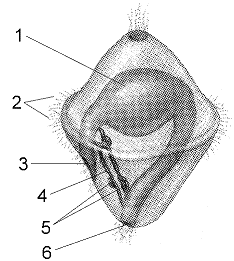Use the basic steps of the scientific method to describe Pasteur's experiments to investigate spontaneous generation
What will be an ideal response?
The observation that life seemed to appear from non-life led some scientists to believe in the theory of spontaneous generation. However, Pasteur among others believed in biogenesis: that life must come from life. The question Pasteur hoped to answer was "Where do microbes come from?" (step 1 ). Pasteur's hypothesis (step 2 ) was that the "parents" of microbes were present in the air on dust particles. In his experiments (step 3 ), he used swan-necked flasks, which were designed to prevent microbes from entering the sterile broth inside them. He observed that the broth remained sterile in the control flask even though air could move into and out of the flask. The experimental flasks were also swan-necked, but they were tilted to allow the dust that had settled to enter the flask. The control flasks stayed sterile, and the experimental flasks became cloudy. These observations led Pasteur to accept his hypothesis (step 4 ). He concluded that the microbes came from the dust and that spontaneous generation was therefore not a valid theory.
You might also like to view...
The larva in Figure 31-4 is:

A. a veliger.
B. a glochidium.
C. a trochophore.
D. a nauplius.
E. a pupa.
During ________ proteins are moved from the cytoplasm to the membrane or periplasmic space, while during ________ proteins are moved from the cytoplasm to the external environment.
A. translocation; translation B. secretion; translation C. transcription; translation D. secretion; translocation E. translocation; secretion
During _________, the chromosomes have reached the poles and a new nucleus forms around them.
a) anaphase b) metaphase c) telophase d) prometaphase e) prophase
Antibacterial drugs can:
a) Inhibit cell wall synthesis. b) Inhibit bacterial protein synthesis. c) Inhibit bacterial transcription. d) Perform all of the above tasks.